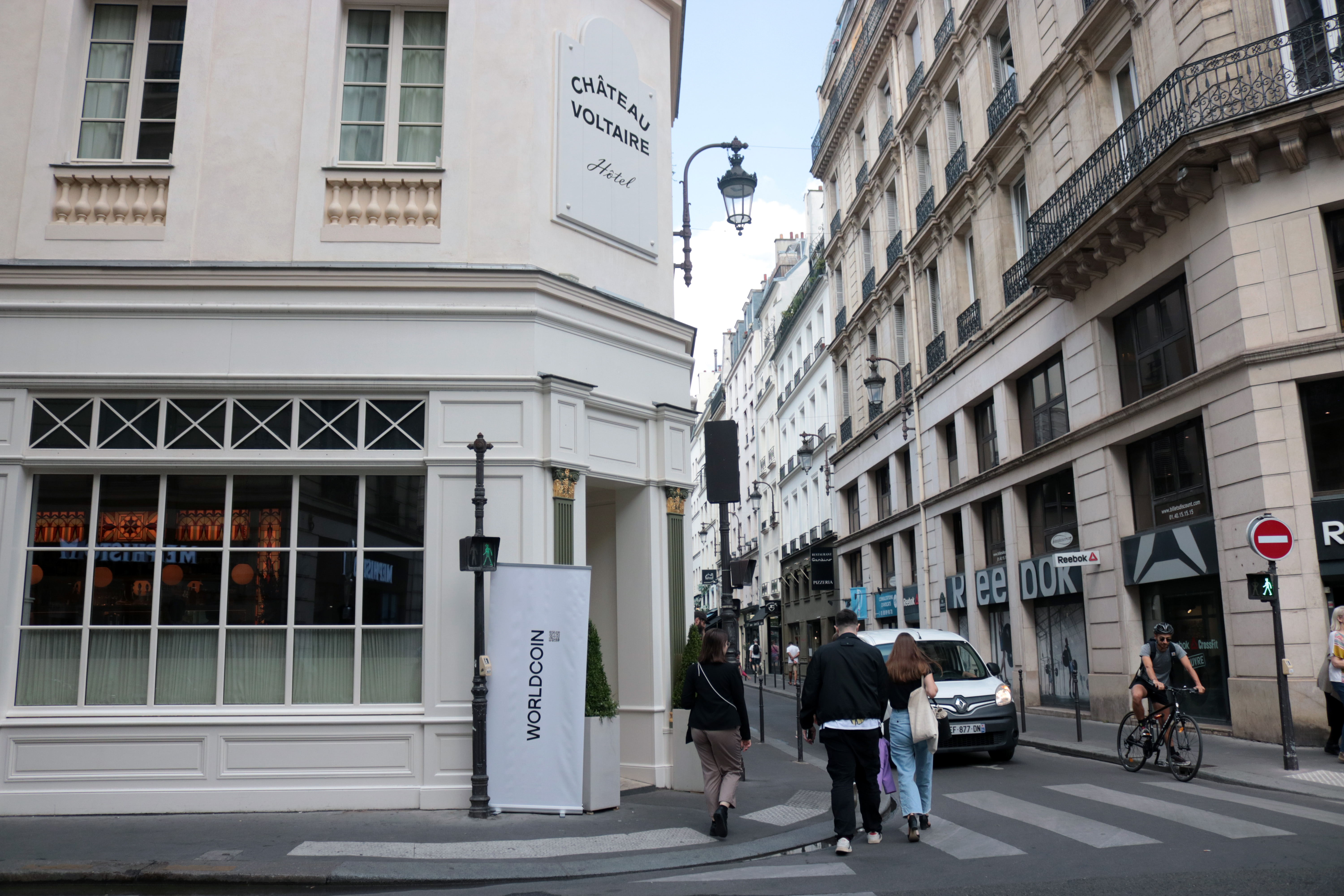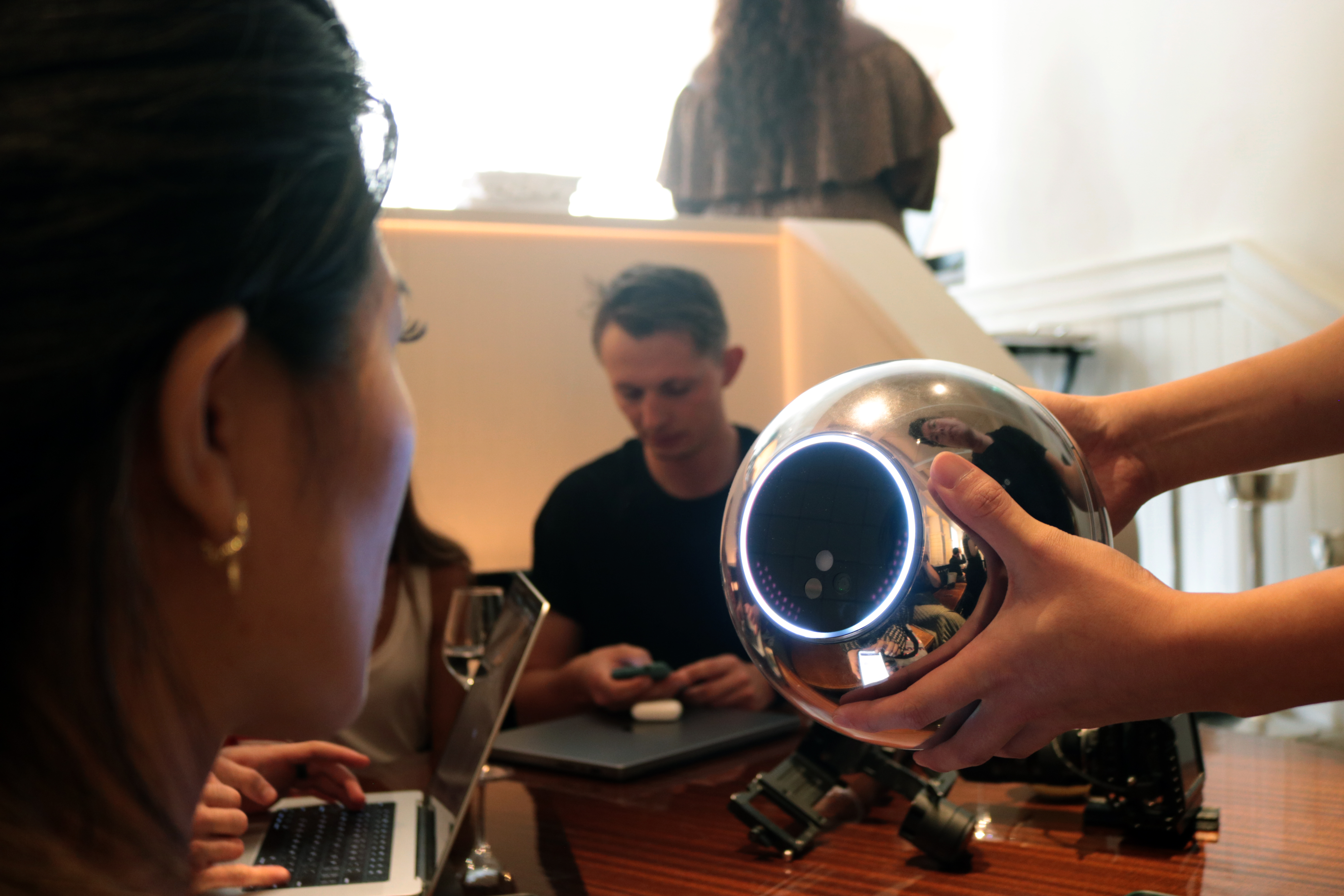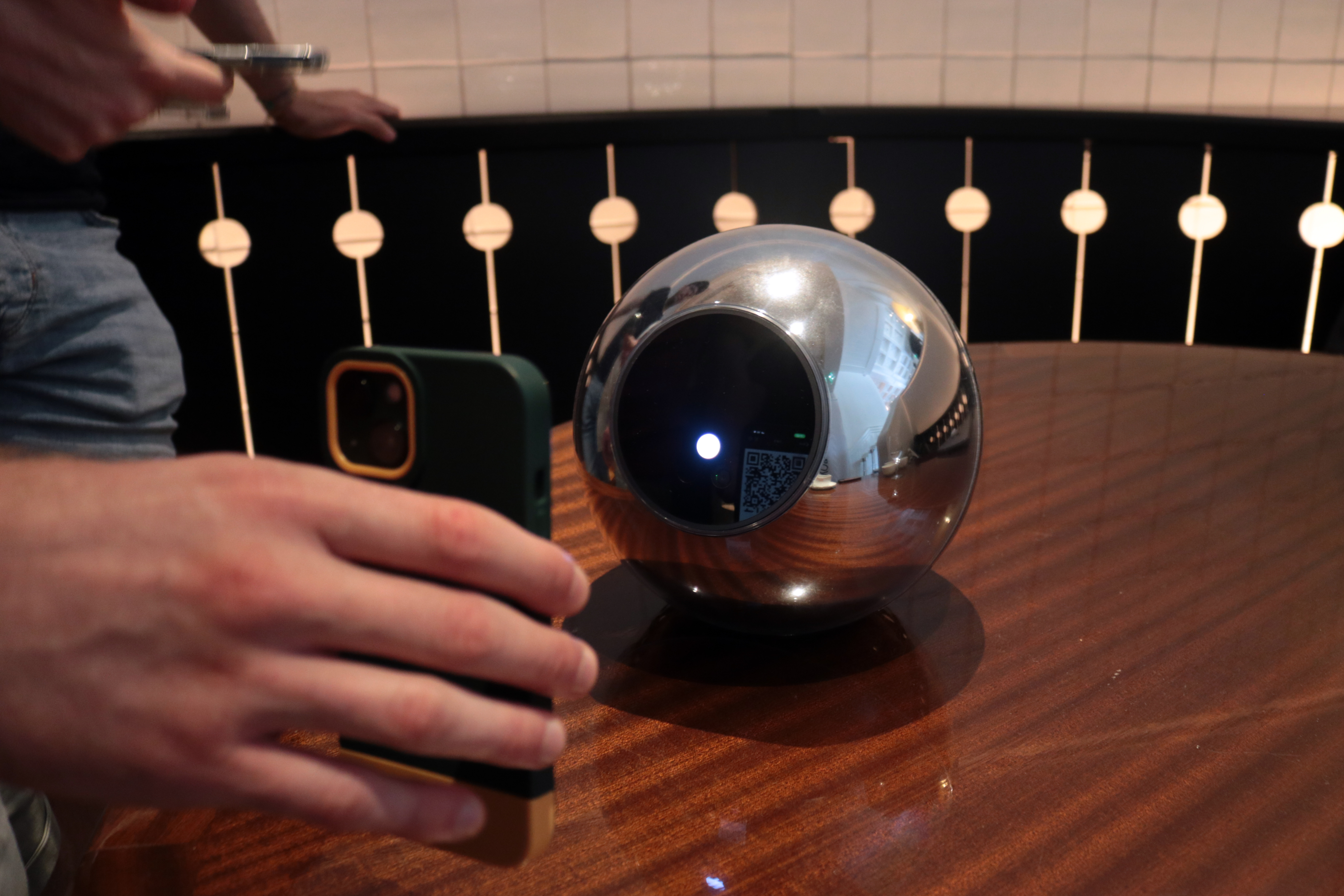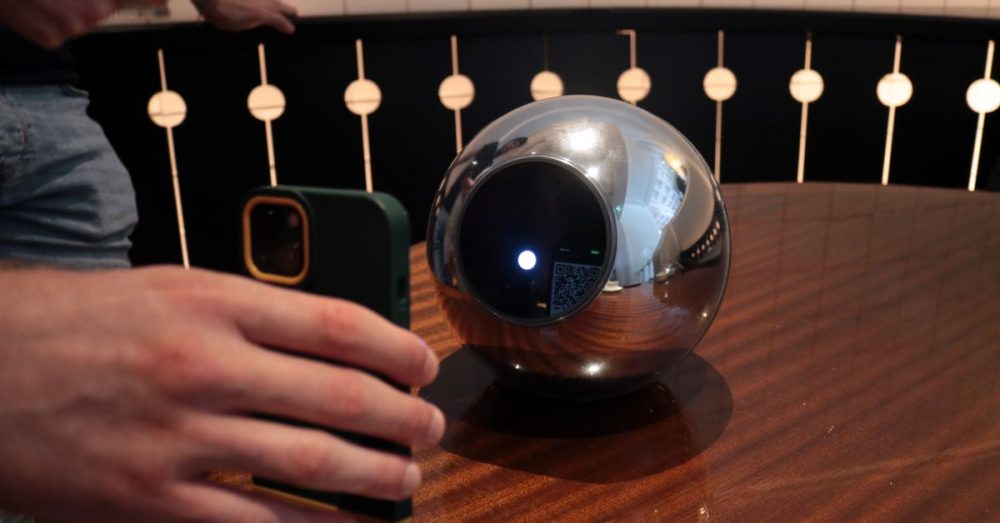Paris, FRANCE – There’s nothing quite like having a futuristic orb pointed at your face to start off the day.
But that’s how a brunch went down last Friday in central Paris, organized by Worldcoin, a crypto and identity startup co-founded by Sam Altman of OpenAI/ChatGPT fame, and Global Coin Research, a venture capital collective backing the project.
The company has set up a new way for humans to prove that they’re human and unique (goodbye captcha!), and made it available today to developers so that they can build a myriad of applications that will perhaps one day form the basis of a new digital economy. The ambition is to one day even use Worldcoin to distribute universal basic income.

The hotel Château Voltaire in Paris, where the Worldcoin and Global Coin Research demo of the Orb took place. (Eliza Gkritsi/CoinDesk)
Part of the controversy around it is the use of biometric data, specifically iris scans, to do so. As someone who doesn’t even use FaceID on an iPhone and takes the time to reject all cookies on every single website, the idea of getting my iris scanned by a sci-fi looking shiny sphere was daunting to say the least.
The company has open-sourced the hardware and most of the software, including the protocol, to increase transparency, and says that none of the iris data is stored on their devices. The iris scan is only put to work to create a unique digital identifier for the user. They explained to me and other reporters that they are not collecting a giant databank of irises and are in fact quite thoughtful about preserving user privacy.
With that in mind, I did my best to put my worries-of-dystopia aside, and headed down to get scanned in Paris, part of the Orbs’ world tour. I waited for a couple of people before me to get scanned, and then sat down on a leather sofa.

A user getting their iris scanned with a Worldcoin Orb in Paris on July 21. (Eliza Gkritsi/CoinDesk)
The process
Alas, for all that artificial intelligence and zero-knowledge proof technology, basic internet connectivity was still a sticking point. The Orb and administrator still have to be connected to the internet, and the establishment’s WiFi and the administrator’s hotspot had a hard time doing so.
After a couple of tries, however, we got it to work.
I clicked on the World App the option to download a grant, an airdrop of the beta token which is closer to an IOU, which then prompted me to get verified by an Orb. After ascertaining the app that I was with an Orb and I wouldn’t have to go look for one, I pointed a QR code from my World App into the Orb’s two eyes. Worldcoin staff also had to scan a QR code (much like how you have to scan a card when you’re buying alcohol at the self-checkout cashier at the supermarket).

The Worldcoin Orb scans a QR code to kick off the iris scan. (Eliza Gkritsi/CoinDesk)
Then it was time. The administrator raised the melon-sized shiny silver Orb to my face, and its two cameras and light pierced through my eyes and into my uniquely identifying irises. A large set of infrared lights shone under the cameras, and another white light started forming a circle around the cameras.
The first time the scan didn’t actually work, probably because I put my phone in between me and the Orb to try to take a video. We tried another time, however, and it was successful.
When the circle was completed, the scan was done. At that point, the app on my phone started processing my data to finish the process. After a few minutes (and one app restart), it was done! From that moment on, I could forever prove that I am unique and human. Relief.
I then claimed my airdrop of 1 WLD and headed to the airport.
The takeaway
Admittedly, the process had some glitches, but, despite my worst fears, it was smoother and less intimidating than I expected.
I couldn’t really help but think about a million scenarios in which my iris data is used in many ways I do not condone, but the scanning process itself was not scary. Perhaps that says something about the overall design of the system, and/or our willingness to participate in what only months ago would have felt like an avant garde technodream.
The hardware and software have done a good job developing the comfortable consumer-facing user experience that we are all accustomed to, which helps.
On Monday, I awoke to some news. The Worldcoin network was launched, and since I had my iris scanned, I could claim 25 WLD.
Now, it’s up to the community of developers to build applications that will bring me back to the ecosystem.







